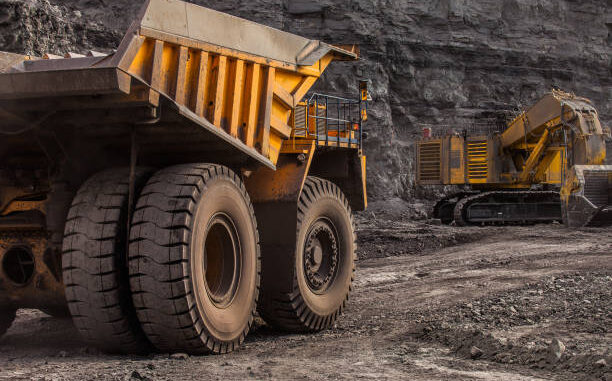
Houston, 13 December (Argus) — Paul Vining is chairman of Westmoreland Mining and former vice president of Peabody Energy. In this Q&A, edited for length and clarity, he talks about why transitioning from coal is likely to be more challenging than many perceive.
What are your thoughts on capital investments in coal?
It is hard for us that have been in the business. I could remember when I was a chief commercial officer of Peabody about 20 years ago, we were selling PRB coal for $2/short ton, $3/st, $4/st. And a third of that revenue went to the government, taxes and royalties and things like that. So, it was a true commodity with a very efficient pipeline, meaning the railroads and easy access to new markets.
There’s been a peak in terms of the investment cycle over the last 30 or 40 years as the coal business internationally has gone through an expansion in various places. And it is sputtering because of ESG [environmental, social and governance programs] now. It is sputtering because in this country, the lack of support from the large banks that have succumbed to the pressure from the White House to not loan to coal companies. I have seen it personally with producers in the US, where credit facilities that are coming up for renewal being told by major banks in New York and elsewhere that they are not going to renew or that they are going to cut their support in half or that they are not, as a matter of bank policy, going to provide the support that they may have provided for 20, 30, 40 years.
But 2021 and early 2022 were marked by better-than-expected demand that at times outpaced supply?
The thing that amazes me is the lack of supply response versus the pricing.
About 80pc of the coal industry in the US went through bankruptcy, more or less. And the reason for bringing that up is that creates a new shareholder base. The shareholders are the people who bought the debt or who were holding it. And they are not in love with the coal business. They’re in love with making money and returns. So, they drive strategies to return cash to shareholders or debt holders, which is their prerogative, not to build new coal mines and not to invest, to expand production.
Coal companies can’t get equipment. They can’t get the right labor. They’re short. And when supply is inelastic or nearly inelastic and demand is reasonable to strong, you have these disconnects that create this very volatile environment.
Do you expect that demand will outpace supply in coming months?
The gas side is usually influential, but, in the US at least, it is very highly dependent on where you are and the pipes. And the lack of pipelines.
What we have seen here in the US lately is the utilities burning more gas, coal being saved actually for stockpiles for the winter, depending on how the storage ended up.
So, I would say that market will be strong through next year.
If you look at the earnings and the announcements from public companies, there is not like there is a huge investment cycle that is taking place. The boards of many of these public coal companies in the US have ESG representation. The priorities of some of these coal companies are obviously to make money and return money to shareholders, but at the same time recognize the social obligation to gravitate away from the production of thermal coal.
What sort of timeframe is realistic for the US to transition from coal-fired generation?
Policies that are driven somewhat out of Washington and certainly out of the individual states have created the very dangerous situation where there may not be sufficient power available for either industry or for residents.
Okay, fine, shut all the power plants down, but don’t do it over 10 years. Maybe it’s going to be 25 years, and let the market determine ultimately. There are enough policies in place to slant it towards renewables as it is.
There’s a balance between the idealistic goal and the practical reality of preserving either life or a lifestyle and to a degree, national security, at least within the borders of the US.
Coal plants require upgrades and heavy maintenance because of ash and the boilers [are] certainly heavier on maintenance than gas plants over time.
So, the market will determine eventually what runs and what doesn’t, and what the utilities were to put their money into. And in a way, this may sound kind of crazy, if you let that drive decisions, you will have more margin capacity and less risk for the general public because the utilities will probably keep more capacity than they really need. They may keep some marginal capacity available for short periods of time when there’s a spike in demand.
In October, a federal court ordered the US Interior Department’s Office of Surface Mining Reclamation and Enforcement to reconsider the environmental affects of Westmoreland’s plan to expand the Rosebud coal mine in Montana. What is going to happen next?
There’ll be challenges, and it’ll eventually wind its way to the higher courts. Actually, the permit was issued. It was challenged after the fact by several of the NGOs [non-governmental organizations], who made a lot of claims as to why it shouldn’t be issued. And, quite frankly, that case will probably work its way through the courts over 2-4 years.
And I am sure the PUCs [Public Utility Commissions] at the Washington and Oregon utilities would love to see the Colstrip power plant shut down. But there was a recent announced transaction between Puget Sound Energy and Talen Energy for Puget to sell its ownership position in Colstrip. Talen is a non-regulated partner, the only one in the group that’s not regulated. So, they’re a market-based entity that sees the future in that power plant for the purposes of producing power and selling it into the marketplace, to the regulated utilities or to those that distribute and deliver power on a regulated basis. Having said that, the current contract and the current future only goes through the end of 2025, and between there and now, we certainly will probably see a lot of developments.
There’s nothing that prevents us from currently mining, but it’s just an example of what challenges the industry [faces]. It’s unusual these days for big surface mines to exist. It’s also unusual to get permits issued in the state of Montana or anywhere else.
What are the main challenges the US and Global coal markets will face in 2023?
To me, it’s kind of like investing in the stock market. You don’t need to pick the peak, but for coal companies and coal mines to be profitable, they need to be fully loaded. You need to be able to run your mines five or six days a week. The labor force doesn’t like to go up and down. When you’re running at 80pc your cost structure, it isn’t destroyed, but it’s definitely stressed. So, most of the coal companies I believe in the US have entered into 2, 3, 4-year utility contracts. Perhaps not at the forward curve, but it’s something slightly below in order to lock in revenue streams with utilities that provide a strong base and foundation for the next two or three or four years.
And the utilities likewise, particularly the ones who’ve been scrambling and found themselves a bit short moved away from buying train to train or quarter to quarter and moved to lock in both volumes as well as pricing on the export side, logistics is a big issue. The rails, certainly both in the east and the west, either because of the obvious trend away from coal. The rails are no different than utilities or the coal companies. Railroads spend less on maintenance, they dedicate less labor and equipment to certain moves. Now you’ve got a potential strike on the rail side. You’ve got super low water on the Mississippi.
So, which companies will be in a better shape in a next few years?
It’s always larger companies. There are niches. The big companies always have an advantage. They have more leverage with the transportation companies that certainly with the larger end user base.
The smaller companies are like the crabs in the ocean. They are always going to be able to feed. And they’re very flexible. They typically are very close to the market and the changes and quick to take advantage of those changes. The bigger companies, they move slower and they’re more challenged when things are very volatile, but their pure size and their capacity gives them a distinct advantage.
What is your outlook for 2023 in terms of exports?
I think that the demand is going to be there. The question is the ability of the US to take advantage of it. It is going to be a strong year for 2023.



